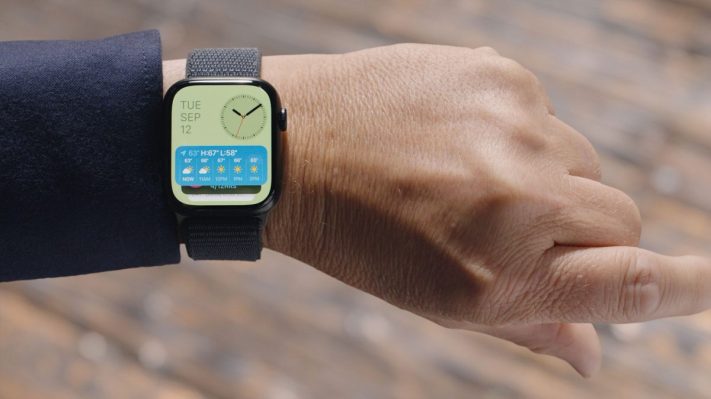Apple just introduced the Apple Watch Series 9 at their annual event in Cupertino. It’s a faster, more capable smartwatch. But the company is also using this new device to introduce a new gesture called “double tap.”
If you’re wearing your Apple Watch on your left wrist and holding something in your right hand, it can be difficult to interact with your watch. Some people even use their nose to tap on the screen.
Apple is probably well aware of the awkward nose-to-screen trick. That’s why the company will let you answer a call by pinching your thumb and finger twice — double tapping. You have to use the hand next to your Apple Watch so that the Apple Watch can sense the gesture you’re making with your fingers.
Catch up on all of our Apple Event 2023 coverage here.
It works with other actions too. For instance, you can stop a timer with a double tap. This action controls the primary button in the current active app. If you have the now playing screen in your Apple Watch, you can use double tap to play and pause music.
Apple says that this new gesture requires the new neural engine in the Apple Watch Series 9. It leverages the accelerometer, gyroscope and optical heart sensor to identify what you’re doing with your fingers thanks to a machine learning algorithm. So don’t expect to use the new gesture on your existing Apple Watch. Double tap will be available next month.
The Apple Watch Series 9 will be available on September 22. It will be available in starlight, silver, midnight, Product Red and a new pink color — and it starts at $399.
Update: It turns out that some Apple Watch owners can already use a feature that is more or less similar to double tap. It can be enabled in the accessibility settings.
Of course, the new sensors and chip in the Apple Watch Series 9 means that it might work better on the latest Apple Watch and it is now ready for prime time — double tap looks at your blood flow and checks the pattern using an ML-trained algorithm for instance. But you may want to have a look at the AssisteTouch documentation on Apple’s website to see if it would make sense for you.

